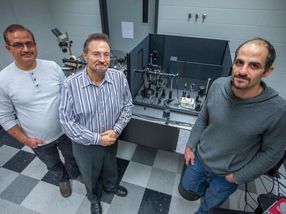New drug treatment reduces chronic pain
A new drug treatment has been found to be effective against chronic pain caused by nerve damage, also known as neuropathic pain, in patients who have had shingles.
The researchers hope that the drug might also be effective against other causes of chronic neuropathic pain, such as diabetes, HIV, nerve injury and cancer chemotherapy, as it targets a mechanism that is not targeted by any existing therapies and has fewer side effects.
Drugs available now have limited success at treating neuropathic pain and often have unpleasant or disabling side effects.
It is estimated that around 190,000 people in the UK get shingles every year, most of them aged over 50. It is caused when a dormant viral infection of a nerve is reactivated, resulting in a painful rash. In most cases, the shingles rash lasts a few weeks, but in some cases the permanent nerve damage caused by the virus results in a chronic neuropathic pain called post-herpetic neuralgia. Around one in 10 people with shingles experiences post-herpetic neuralgia and, once established, it usually causes life-long suffering.
In a study involving 183 patients with post-herpetic neuralgia in six countries, the new drug EMA401 was found to reduce pain and did not cause any serious side effects. The findings are published in The Lancet.
Lead author Professor Andrew Rice, from the Department of Surgery and Cancer at Imperial College London, said: "Conventional painkillers don't tend to help people with severe chronic neuropathic pain and most available treatments have modest efficacy and/or are limited by side effects. We are therefore keen to find new ways of providing these people with some relief.
"A positive trial like this in such a challenging condition as post-herpetic neuralgia, for a drug that acts in a new way, is unusual and very exciting. We hope that the new drug will ultimately offer hope for patients who aren't helped by current treatments."
The study, a phase 2 trial, compared EMA401 with a placebo, with participants taking two pills a day for four weeks. Fifty-eight per cent of participants taking the drug found it effective, reducing pain by at least 30 per cent.
Spinifex Pharmaceuticals, which owns the drug, now plans to conduct a larger trial, possibly testing higher doses of the drug for longer periods of time.
"We are looking forward to seeing how EMA401 performs in a larger trial in people with post-herpetic neuralgia, where we will explore higher doses, and in trials where we will analyse its efficacy in other chronic pain conditions. Identifying the characteristics of the patients who do get good pain relief from EMA401 will also be an important avenue for research," added Professor Rice.
Tom McCarthy, CEO of Spinifex Pharmaceuticals, said: "There is a clear need for new treatments that bring patients pain relief with fewer side effects. In addition to post-herpetic neuralgia, we see broad potential for EMA401 to treat a range of chronic painful conditions such as pain due to osteoarthritis and diabetes. We look forward to delivering on the further development of EMA401."
Spinifex's clinical program for EMA401 includes a clinical trial in the treatment of neuropathic pain in patients after cancer chemotherapy, which is being conducted by Professor Praveen Anand at Imperial College London. Professor Anand's group also conducted key clinical tissue research which led up to the trials.
Professor Rice works with patients with neuropathic pain at Chelsea and Westminster Hospital, where he is a Consultant in Pain Medicine. He has worked with Spinifex through Imperial Consultants on the pre-clinical development of the new drug since 2005.























































